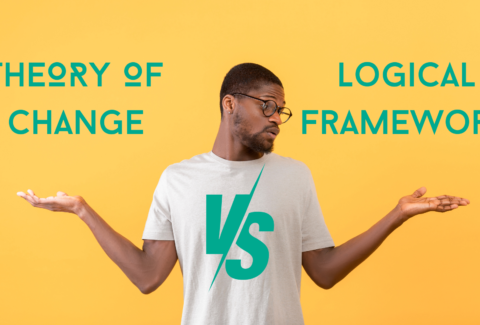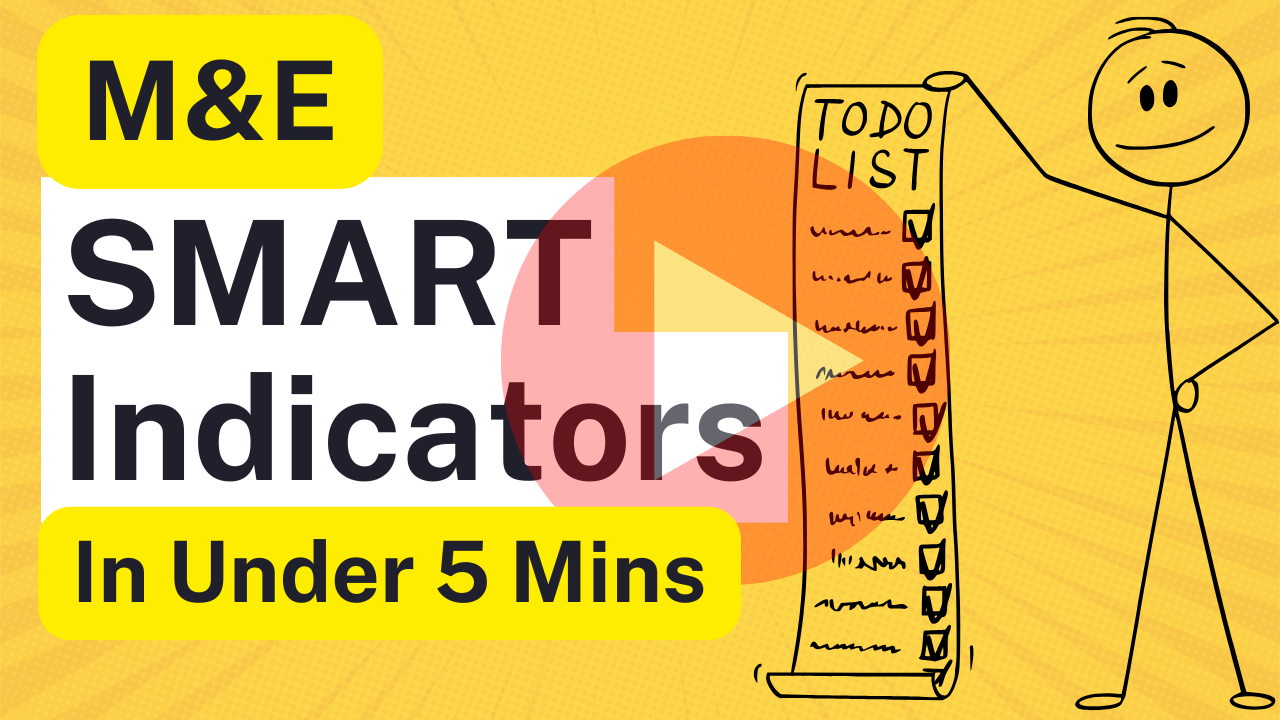Understanding Theory of Change
December 20, 2023 2023-12-20 7:28Understanding Theory of Change
If you’re looking to make a positive and sustainable impact through your initiatives, it’s essential to have a clear understanding of Theory of Change. This powerful framework serves as a roadmap for achieving your desired outcomes and goals, all while ensuring stakeholder engagement and identifying potential challenges along the way.
Whether you’re a non-profit organization, government agency, or social enterprise, Theory of Change can help you focus your efforts and maximize your impact. By using this framework, you can articulate what changes you aim to achieve and define how you will go about achieving them.
In this article, we’ll give you an overview of the Theory of Change framework, explore the benefits of incorporating it into your strategic planning, and discuss how you can apply it to your initiatives.
Key Takeaways
- Theory of Change is a framework that helps you achieve your desired outcomes while ensuring stakeholder engagement and identifying challenges.
- It’s beneficial to incorporate Theory of Change into your strategic planning to maximize your impact.
- The Change Pathway outlines the sequence of activities and interventions required to achieve your desired outcomes.
- Identifying assumptions and involving stakeholders in the planning process can enhance the effectiveness of Theory of Change.
- Evidence-based approaches, monitoring progress, effective communication, and storytelling are all essential elements in Theory of Change.
The Benefits of Theory of Change
Are you looking for a framework to help guide your organization’s strategic planning process? Utilizing Theory of Change can provide a multitude of benefits.
Clear Change Pathway
Theory of Change offers a structured framework that clarifies the pathway for change. By mapping out the steps needed to achieve desired outcomes, you can ensure that your organization is aligned and on track towards achieving its goals (VanDerHeyden et al., 2016).
Identify Assumptions
Assumptions are inherent in any strategy or initiative, and it is crucial to identify and analyze them to ensure your organization is working with accurate information. Theory of Change provides a mechanism to identify assumptions that could impact the success of your strategy (Kete, 2011).
Drive Outcomes and Outputs Aligned with Stakeholder Engagement
Theory of Change helps you define clear outcomes and outputs that align with stakeholders and their interests. By involving them in the planning process, you can better measure the impact of your organization’s initiatives on the community you serve (Community Solutions, n.d.).
By incorporating Theory of Change into your strategic planning process, you can create a clear change pathway, identify assumptions, and drive outcomes and outputs aligned with stakeholder engagement. The resulting benefits will help your organization to better achieve its goals and create meaningful impact.
Understanding the Change Pathway
The Change Pathway is a critical element of the Theory of Change framework. It outlines the sequence of activities and interventions required to achieve the desired outcomes. To begin identifying the Change Pathway, consider the end goal and work backward to determine feasible steps that will contribute to achieving it.
Breaking down the Change Pathway into smaller, manageable steps can help make the planning process more digestible. It also allows for greater flexibility in adjusting the pathway as new information or challenges arise.
For example:
“If the end goal is to increase access to education for underserved communities, some feasible steps that contribute to achieving this goal could include:
- Conducting a needs assessment to understand the current gaps in access to education.
- Working with local leaders and organizations to identify potential partnerships for implementing education initiatives.
- Developing and implementing targeted programs that address the specific needs of the community, such as after-school tutoring or vocational training programs.”
Once the sequence of interventions has been identified, it’s essential to monitor progress and evaluate results to determine if adjustments are necessary. The Change Pathway should be viewed as a flexible guide that can be modified as new insights are gained.

Identifying Assumptions
The Theory of Change framework requires identifying and analyzing assumptions to ensure effective planning. Assumptions are beliefs about how an initiative will create change, and identifying them can help establish a realistic pathway towards achieving goals.
Assumptions can be related to various aspects of a project, such as the target audience, resources, or external factors that may affect the initiative’s success. To identify assumptions, it is important to engage stakeholders in the planning process, including those who may be impacted by the initiative.
Once identified, assumptions should be analyzed to determine their level of certainty. This analysis can help identify potential risks and determine strategies to mitigate them.
Assumptions can be recorded in a table for easy tracking. See the example below:
“Remember that identifying your assumptions is not about proving or disproving something, but instead acknowledging the things that need to come together for you to know if your project was successful or not.”
Driving Outcomes and Outputs
Defining outcomes and outputs is essential in the Theory of Change framework. Outcomes are the impact or long-term effects of an initiative, while outputs are the direct and immediate results of the project. Outcomes and outputs must be SMART (specific, measurable, achievable, relevant, and time-based).
By distinguishing outcomes and outputs, you can measure impact accurately, track progress, and make informed decisions. Clear outcomes and outputs can also provide a sense of direction and focus while ensuring accountability and transparency.
For example, consider a counseling program for high school students. The desired outcome could be to improve the mental health and academic performance of the students, while outputs are the number of students who attended the counseling program, the number of sessions they attended, and the various interventions applied.
Defining outcomes and outputs also facilitates stakeholder engagement, as it provides a clear understanding of the expected results of the initiative. With SMART outcomes and outputs, stakeholders can collaborate effectively, monitor progress, and celebrate achievements.
The Role of Stakeholder Engagement
Stakeholder engagement is a critical aspect of Theory of Change as it is an inclusive process that creates a shared understanding of the change pathway.
Involving stakeholders in the planning process enhances the effectiveness of the change pathway as it brings diverse perspectives and insights. It creates a sense of ownership and accountability among stakeholders, leading to a higher likelihood of achieving desired outcomes.
One of the key benefits of stakeholder engagement is the identification of potential implementation challenges. Engaging stakeholders early in the process can help address concerns and ensure buy-in from the beginning.
Stakeholder engagement can take various forms, such as consultations, surveys, focus groups, and public hearings. It is essential to identify the appropriate method based on the needs of the initiative and the audience.

The Theory of Change framework, when combined with effective stakeholder engagement, provides a comprehensive approach to drive meaningful change and impact.
Embracing Evidence-Based Approaches
One of the significant aspects of Theory of Change is the adoption of evidence-based approaches. Making decisions based on relevant data and research is crucial to ensuring the effectiveness of strategies.
Through evidence-based approaches, you can gather detailed insights into the needs and preferences of stakeholders to create improved services and solutions. By utilizing data, you can analyze current situations, identify gaps, and create informed goals and objectives to drive meaningful impact.
Furthermore, evidence-based approaches allow you to continually monitor progress, measure outcomes, and make necessary adjustments to enhance outcomes. This helps to ensure resources are allocated effectively and efficiently, increasing the success rate of initiatives.
By embracing evidence-based approaches within Theory of Change, you can create a powerful strategy that aligns with the needs of stakeholders and generates positive change.
“You should be moving to evidence-based. Decisions should be taken on evidence not opinion.” – Louise Casey
Monitoring, Communication, and Storytelling
Measuring impact is an important aspect of Theory of Change. Regular monitoring of program activities, outputs, and outcomes is critical to track progress and adjust strategies accordingly. This allows you to ensure that the program remains on the right path towards the desired impact.
Good communication practices are essential in any endeavor, and Theory of Change is no exception. Effective communication with stakeholders, team members, and beneficiaries can help build trust, obtain feedback, and create strong partnerships. Through open and transparent communications, you can ensure everyone is on the same page and working towards the same goals.
Finally, storytelling plays a vital role in conveying your program’s narrative of change to the wider world. Through compelling stories, you can engage audiences and highlight the impact made on individuals and communities. Effective storytelling can help gain support, build awareness, and encourage action towards your program’s goals.
“Monitoring helps you track progress, communication helps you collaborate, and storytelling helps you inspire.”
Conclusion
By utilizing the Theory of Change framework, you can drive meaningful impact in your strategic planning. Understanding the change pathway, identifying assumptions, driving outcomes and outputs, involving stakeholders, and using evidence-based approaches are all vital components of Theory of Change. However, impact measurement and continuous improvement are equally crucial elements of this framework. By monitoring progress, effectively communicating results, and telling your story of change, you can consistently improve your strategies and achieve your desired outcomes. Remember to prioritize impact measurement and continuous improvement using Theory of Change as your guiding framework, and success will be within your reach.
Resources
Websites:
- Theory of Change: Dive straight to the source! This official website offers a treasure trove of information, from basics to advanced guides, templates, and even webinars: https://www.theoryofchange.org/what-is-theory-of-change/
- Better Evaluation: Sharpen your ToC skills with expert resources from Better Evaluation. Manager’s guides, how-to manuals, and insightful case studies await: https://www.betterevaluation.org/tools-resources/theory-change-0
- Annie E. Casey Foundation: This esteemed foundation provides a practical roadmap for crafting your ToC model. Get started with their step-by-step guide: https://www.aecf.org/resources/theory-of-change
- Australian Institute of Family Studies: Down under, the Aussies have a gem of a guide explaining ToC and its powerful applications: https://aifs.gov.au/research/research-reports/family-relationships-and-intergenerational-exchange-later-life
Books:
- Theory of Change in Practice: Making an Impact on a Complex World by Sarah Parkin: Master the art of navigating complex problems with Parkin’s comprehensive guide.
- Making Change Happen: A Theory of Change Guide for Nonprofit Organizations by Peggy Brandon: Tailor ToC for the non-profit landscape with Brandon’s expert insights.
- Outcomes Mapping: Building Theory of Change by Earl S. Riecken: This classic text delves into the heart of ToC, its components, and practical implementation strategies.
Articles:
- What is Theory of Change? A Simple Explanation by Idealist: Demystify ToC with Idealist’s clear and concise guide: https://www.mindtools.com/ag66mq2/intentional-change-theory
- How to Use Theory of Change to Achieve Your Goals by Harvard Business Review: Discover how ToC empowers success across sectors, from non-profits to corporations: https://www.theoryofchange.org/what-is-theory-of-change/
- The Power of Theory of Change by Stanford Social Innovation Review: Dive into the transformative power of ToC in this thought-provoking article: https://ssir.org/articles/entry/unpacking_the_theory_of_change
FAQ
What is Theory of Change?
Theory of Change is a strategic planning framework that outlines the sequence of actions and interventions required to achieve desired outcomes. It helps organizations and initiatives articulate how they expect to create meaningful change and understand the logic behind their strategies.
What are the benefits of using Theory of Change?
The benefits of using Theory of Change include having a clear change pathway, identifying assumptions, driving outcomes and outputs, and engaging stakeholders effectively. It provides a comprehensive framework for planning, implementation, monitoring, and evaluation, leading to more impactful and evidence-based strategies.
How does the Change Pathway work within the Theory of Change framework?
The Change Pathway within the Theory of Change framework outlines the specific activities and interventions that need to occur in a logical sequence to achieve desired outcomes. It acts as a roadmap for planning and implementing initiatives and ensures that efforts are focused on creating the intended impact.
Why is it important to identify assumptions in Theory of Change?
Identifying assumptions is crucial in Theory of Change as it helps stakeholders understand the underlying beliefs and conditions that inform their strategies. By explicitly acknowledging and analyzing assumptions, organizations can better assess the feasibility and risks associated with their plans and make informed decisions.
How do outcomes and outputs contribute to measuring impact within Theory of Change?
Outcomes and outputs are key elements in Theory of Change as they provide measurable indicators of progress and impact. Outcomes represent the desired changes or effects, while outputs are the tangible results or deliverables. Defining clear outcomes and outputs allows organizations to track and evaluate the effectiveness of their initiatives.
What role does stakeholder engagement play in Theory of Change?
Stakeholder engagement is critical in Theory of Change as it ensures that the perspectives and needs of all relevant stakeholders are considered in the planning and implementation process. Engaging stakeholders fosters collaboration, builds trust, and strengthens the alignment between strategies and desired outcomes.
Why is an evidence-based approach important in Theory of Change?
An evidence-based approach is fundamental in Theory of Change as it relies on relevant data, research, and proven practices to inform decision-making. By using evidence, organizations can enhance the credibility and effectiveness of their strategies, making them more likely to achieve their intended outcomes.
How do monitoring, communication, and storytelling contribute to Theory of Change?
Monitoring progress, effective communication, and storytelling are essential components of Theory of Change. Monitoring allows organizations to track the implementation and impact of their initiatives, while effective communication ensures that stakeholders understand the purpose and progress of the change process. Storytelling helps convey the narrative of change and engage audiences emotionally and intellectually.
What is the importance of impact measurement and continuous improvement in Theory of Change?
Impact measurement and continuous improvement are vital in Theory of Change as they allow organizations to assess the effectiveness and efficiency of their strategies. By measuring impact, organizations can understand whether their initiatives are achieving the desired outcomes and make necessary adjustments to improve their future interventions.





